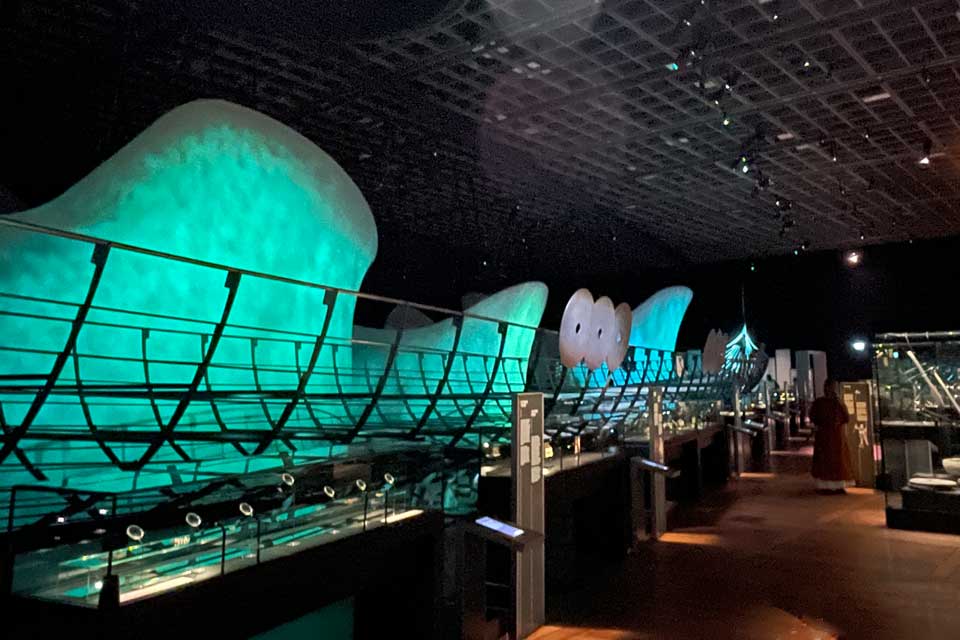REVIEW: Last year, Oslo opened its doors to a new permanent Viking exhibition. June 2021, Stockholm and Copenhagen followed. Each Scandinavian metropolis thus presents its distinct take on the history of the Vikings; albeit with very different outcome.
Vikings are hot property in the tourism business in Scandinavia, the heartland of the Viking World from AD 750 -1050. Last year, Oslo decided to offer a new permanent exhibition showcasing their finest objects. This year, Stockholm and Copenhagen have followed suit, while Oslo has expanded. The overall question is: how does these different museums frame their obligation to tell the story of the Vikings to tourists? Which story have they chosen to tell? And how succesful are they in fulfilling their aims? The following presents a series of reviews. First Stockholm, then Copenhagen and finally Oslo.
“The Viking World” in Stockholm 2021
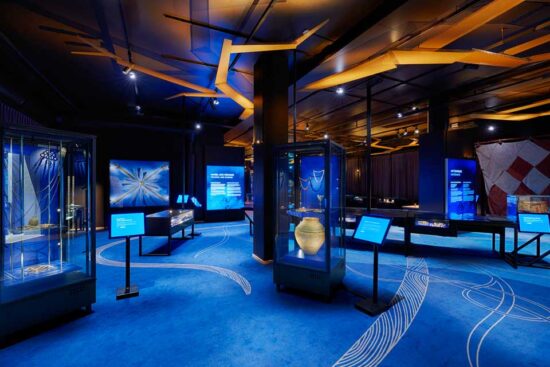
Arguably, the exhibition of the new Viking World in Stockholm is beautifully designed. Construed around the myth of Yggdrasil, the visitor follows meandering roots around ten differently coloured “worlds” or “themes” filled with 2500 Viking objects from the great collection of the National Museum in Stockholm. From the social structure of society, the different roles of people, the travels and the cultural exchange with distant lands – over crafts, trade, shipping and plunder – to the relationship between the living and the dead and the emergence of the Christian faith, we are invited to visit different aspects of the Viking way of life.
Unfortunately though, this spatial organisation does not quite satisfy. What we get is a collection of beautiful and intriguing objects telling the usually fragmented stories of the international context, the world at home, the family, the role of women, the arts & crafts, traditions and faith; and, of course, the role of the ships, the raiding, and the upcoming towns and cities, which each play a distinctive role in the exhibition. As also, the interplay between the heathen myths and the new Christian faith does.
An yet, we do not get a sense of how it all hanged together – how it made sense to the “Viking people”. Neither do we get a real feeeling for the pulsating changeability, migration and colonisation, which contemporaries arguably considered one of the main features of the world of Yggdrasil and the wider Viking World. In Stockholm, of course, we are told the Vikings went abroad. In the end, though, focus seems to be on their return to their lives at home. Here, between the roots of Yggdrasil in Asgard and Midgard, they raised their memorial stones whether painted or carved, forcefully indicating where “home” was. To see these stones in their proper context is well worth a travel to Stockholm in the years to come. They do tend, however, to downplay the fluidity of the Viking World. In stead, we feel the exhibition is about “bringing it all home”.
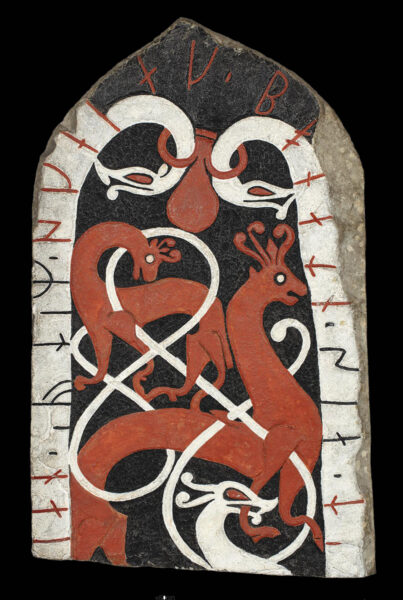
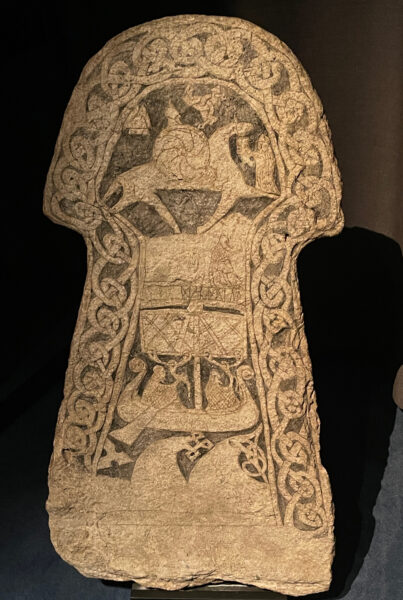
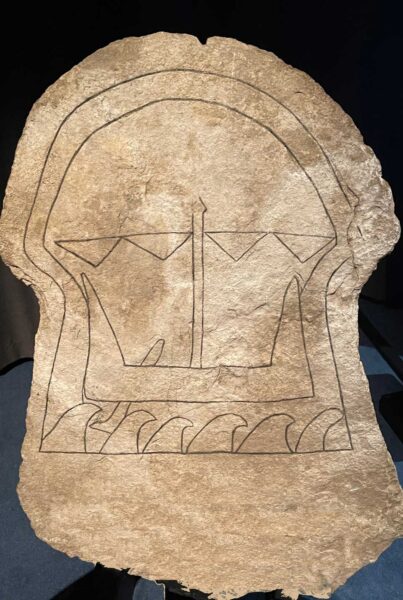
“The Raid” in Copenhagen 2021
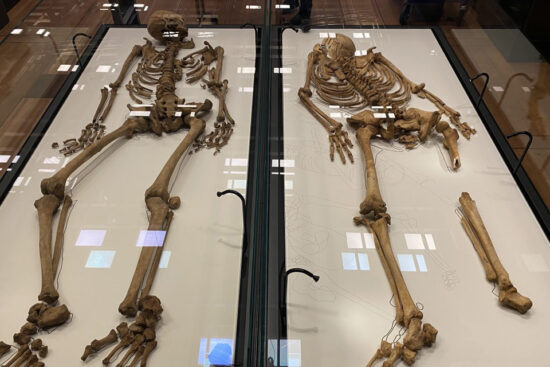
In Copenhagen, the governing idea is quite different. Here the Vikings are seen as members of a culturally distinct diaspora reaching from Newfoundland to Kiev, Byzantium and further east and south. In Stockholm, they have renounced maps. In Copenhagen, they lead us on the way across the high sea as well as down the rivers. Beacon is the largest Viking ship ever excavated, wreck six from Roskilde, which has been dendrochronologically dated to 1025. Measuring 37 metres it carried a crew of probably a hundred persons. Home again after a world tour of six years, (the wreck of) the ship may take up a lot of space in the Egmont-hall in Copenhagen. On the other hand, the remnants of this mighty vessel is unequivocally the piece-de-resistance; worth travelling across the world to see.
Another fascinating exhibit consists of the remains of two individuals, who by accident were found to be very closely blood-related – probably half-brothers, perhaps cousins.
One of these individuals was discovered at Oxford in 2010 as part of an excavation of a mass-grave likely stemming from the St. Brice’s days massacre AD 1002. Ordered by King King Æthelred the Unready, the young man – together with 34 of his friends and compatriots – were killed by approximately nine different sword-stabs to his head. He also suffered several lesions caused by spears and arrows. Closer studies of his remains show that he experienced a vitamin deficiency, as well as an inflammation of his legs caused by kicks and maltreatment. Perhaps, he was a prisoner of war?
His brother, who died decades later at Odense at the age of fifty had lived a different and even harsher life. His teeth were worn, and at death he was suffering from a lung disease, perhaps tuberculosis. His body had also been racked by pain from arthritis. Likely, his death was caused by a sword-stab to his pelvis, which had not healed. Both brothers had lived off the same diet, with plenty of marine elements. As part of the exhibition, the elder relative has been reconstructed.
These two individuals play nicely into a part of the exhibition, which is temporary and aims to tell the story of the expedition of Ragnarr, Bjorn Ironside and Hasting and their raids into the Mediterranean in the 9th century. The stories of these heroes later gained near-mythical status, and the films exploit this by going all the way in terms of scientific reconstruction of how such an expedition might have played out. The films, which are cast up on billowing sails are accompanied by a fascinating number of objects showing the strange worlds which Bjorn and his band of brothers visited on their raiding and trading expeditions to France and later Morocco, El Andalus and Syria. This part of the exhibition is temporary, intended to be exchanged for another exhibition on the mythical beings of the Völva – the Viking seeresses.
However, the exhibition also represents a sustained effort to reconstruct the more staid world of the Vikings “at home”. Not only do we meet several Vikings dressed up in their ordinary daily dresses and tunics, we may also experience detailed reconstructions of some of the more spectacular garments carried by the absolute Viking elite in the 10th century. A special group of researchers has worked scientifically to reconstruct these clothes as best as possible. To this should be added the old-fashioned but very successful use of dioramas, an obvious delight to youngsters exploring the “nether regions” of the exhibition.

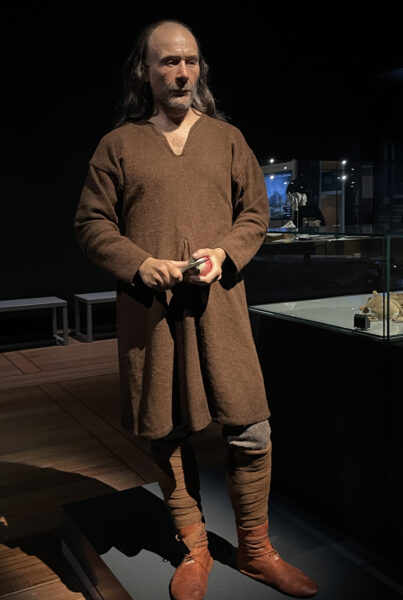
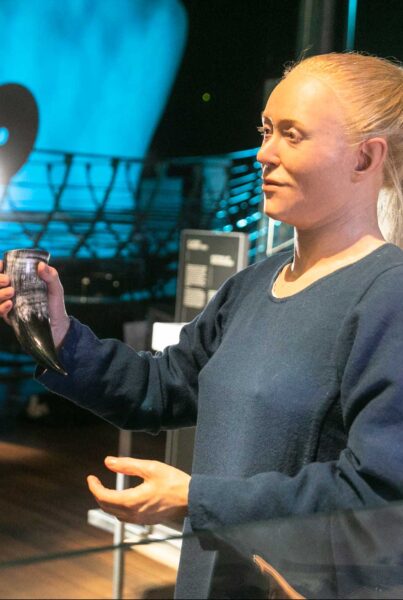
The Víkingr in Oslo 2020 and Fabulous Animals 2021
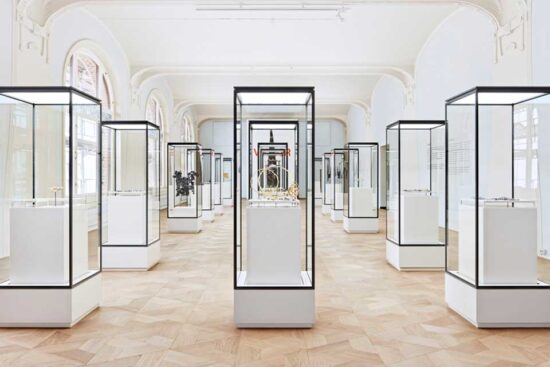
Last year, the Museum of Cultural History in Oslo, chose to tell a distinctly different story of the Vikings. By focusing on some of the most exquisite objects found in primarily Norwegian graves from the Viking Age. The exhibition consists of 19 display cases, and the objects are shown in full daylight. Compared to both Copenhagen and Stockholm, which appear decidedly murky due to the fragile character of many of the exhibited objects. Not so in Oslo, where the principal idea is to demonstrate the exquisite art and craft of Viking treasures such as the Gjermundbu helmet, the bridle from Borre or the Langeid sword.
These objects, though, have not only been chosen for their beauty, but also for their demonstration of three important aspects of the Vikings, their journeys, the warriors, and the changing society.
We may find comparable swords and treasures exhibited in both Stockholm and Copenhagen. In Oslo, however, their beauty and craftsmanship has been allowed to stand out.
This dedicated exhibition to the “Vikingr” was recently (June 2021) accompanied by another permanent exhibition on “Fabulous Animals” exploring the mythical world from ca. 400-1050, when the distinction between humans and animals was not as clear and sharp as it seems to be now. During this period, a Scandinavian style of its own called ”Animal ornamentation” arose. These artistic designs mirrored people’s beliefs and conceptual world offering us an insigth into a world filled with magical and strange animals and birds, shapeshifters as Odin, Loke and humans posing and acting as shamans. In this world, animals were friends and helpers offering a new ”skin” to humans bent on transgressing their human existence. I later yeras, much has been written about the transgender character of female warriors. Perhaps the distinction was not so much about transgendering, but about transgressing the human-animal world.
Both exhibitions are found at the Museum of Cultural History in Oslo, which also is responsible for the Viking Museum at Bygdøy holding the collections from the Oseberg and Gokstad ships. This museum is still open, but will soon be closed as part of the project to built a whole new Viking Museum, scheduled to open in 2025-26. This summer, Oslo should be on the itinerary.
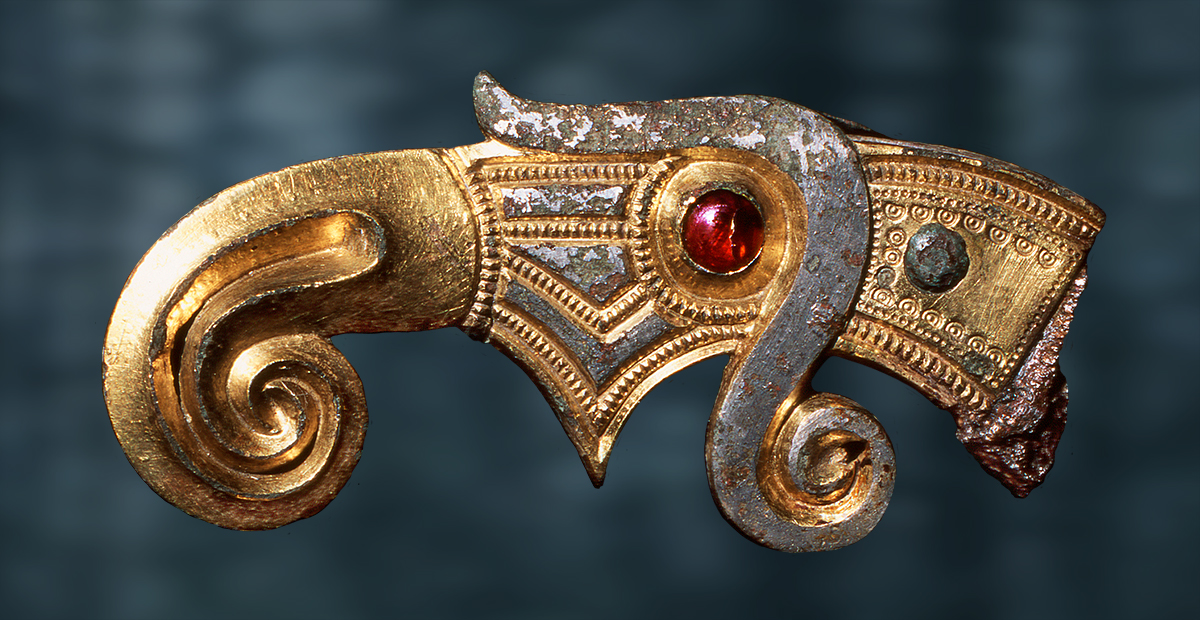
Comparison
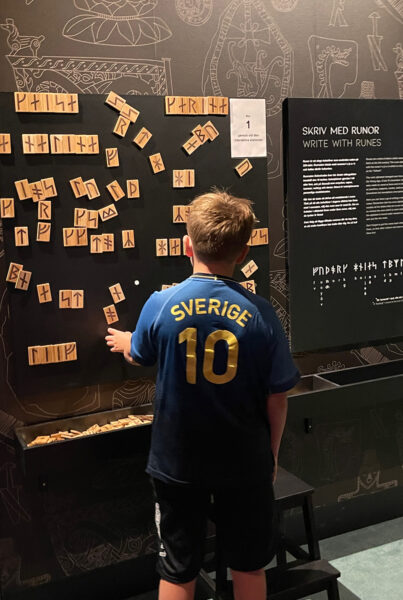
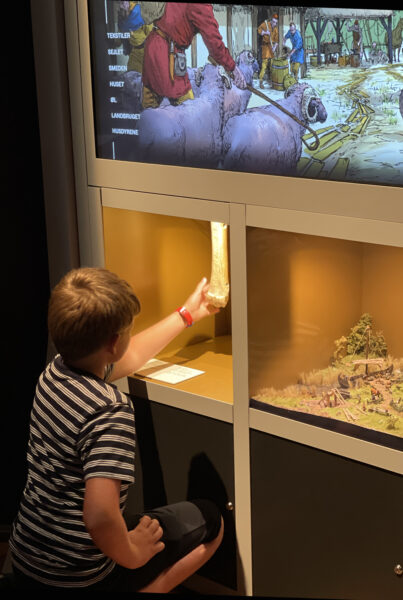
Both Oslo, Copenhagen and Stockholm boast that the objects exhibited belong to their respective national collections, many hitherto residing in the storages in their National Museums; (although, the exhibition in Copenhagen crossed this line by borrowing the skeleton of the unfortunate young man murdered in Oxford). Further, the exhibitions are intended as permanent. Again though, Copenhagen promises a semi-permanent exhibition as the films and objects narrating the story of Bjorn Ironside and his friends will be exchanged for a new story on the seeresses (Vølvas).
Further, the Stockholm- exhibition is marketed as “The world’s largest Viking exhibition”, covering 1000 m2 and exhibiting more than 2500 objects. This is not an accurate estimate; it appears that the exhibition at Egmonthallen in Copenhagen also marshals 1000 m2 while the number of objects runs to 3500. Compared to this, Oslo has chosen another route where less is more. Yet, by marking out the high quality of the exhibited pieces, the visitor may not get as full an experience as achieved in both Copenhagen and Stockholm. On the other hand, the opportunity to study the exhibits in daylight and in detail, is a joy.
Thus, and to a large extent, the exhibition in Oslo succeeds the best according to its “script”. Carefully curated to show a few yet absolute highlights, the focus is on art and splendour. These objects matter and we are invited to see them “uncluttered” and in full daylight.
However, both Stockholm and Copenhagen do furnish the same kind of experience. One of the elements in the Copenhagen exhibition consists of the many coins, which, although delicate and small, offer some of the most ubiquitous images and ideological programmes consumed by ordinary people in their daily lives. Coins were precious, yet they were not rare. By magnifying the coins and other small pendants, we get the opportunity to see them in detail. However, the Swedish exhibition offers another set of opportunities. On a dedicated website, we are invited to see all the texts accompanying the displays and the photos of each of the objects – often seen from several perspectives. This website is a rich and exciting display, which may be endlessly explored.
Might one hope, likewise, digital exhibitions will soon be made available by the National Museums in Copenhagen and Oslo?
Finally, we should evaluate the three different “takes” of the Vikings. Which is the more consistent compared to its governing idea? As said, Oslo offers a limited, yet truly disciplined exhibition.
An yet, the Copenhagen exhibition offers the best and most consistent contribution when we evaluate it according to its take on the Viking World. Some may disagree with the idea that the Vikings were primarily travellers, migrants, raiders and traders living in a fluid diaspora. But the exhibition delivers on their promise to lead us down this road.the Copenhagen exhibition has gone all in for the “raid” as its keynote. In this perspective, Vikings were movers and shakers gradually conquering the whole Northern hemisphere, culminating in Cnut the Great’s conquest of his North Sea Empire, as witnessed by his magnificent ship.
Perhaps contrary to this, it seems as if the good people in Stockholm up to the end has been debating with each other on how to “frame” the Vikings – were they less multicultural migrants and more homebound family members? In Stockholm we are left with a less precises answer to this overall question.
Finally, it behoves this reviewer to compliment Stockholm as well as Oslo on the actual designs of their exhibitions. Tumbling with the prerequisite to make room for the large wreck of a ship, yet wishing to give another visual expression than that of 2013, Copenhagen is not quite as beautiful. On the other hand, Copenhagen has a more satisfying approach to communication. While Stockholm – with little success – tries its hand at Virtual Reality – Copenhagen does not shy off the oldfashioned media like dioramas and individual reconstructions of persons. Such “cheap” but effective tools have been avoided by Stockholm, although they might easily have been employed in the exhibition. For instance, the remains of the so-called girl from Birka are exhibited. But her reconstruction has been shelved.
However, don’t miss any of the four exhibitions. In themselves, the objects are magnificent and truly exciting to behold and admire. Especially, though, don’t miss out on Oslo in 2021. Bygdøy closes soon, and five years is a long time to wait for the next opportunity to see the ships from Oseberg and Gokstad.
VISIT:
The Viking World
Historiska Museet
Narvavägen 13–17
Stockholm
Vikingr And Fabulous Animals
The Historical Museum
Frederiks gate 2,
Oslo
The Raid
Ny Vestergade 10
Prinsens Palæ
Copenhagen
